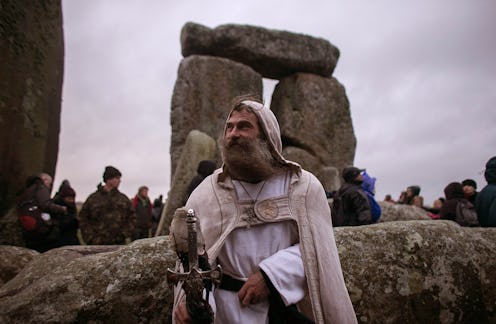News
Is Stonehenge Just a Giant Musical Instrument?
Stonehenge: ritual site, ancient calendar...xylophone? This week, a group of researchers from the Royal College of art discovered that the monument's central stones produce certain notes when struck – and they think it might be intentional. It would be one way to explain why Stonehenge's builders brought the giant rocks from South Wales all the way to the moment's site 160 miles away.
The Landscape and Perception Project at RCA aims to "observe and listen to this prehistoric landscape as if with Stone Age eyes and ears." Although it's practically impossible for archaeologists to observe these sensory attributes, the RCA researchers caution that they shouldn't be ignored entirely. In fact, the researchers believe that it is precisely these ephemeral qualities that might have led Stonehenge's builders to select the materials they did.
To test their theory, the researchers used stone-age hammers to strike thousands of bluestones at Carn Meryn in Wales, where most of Stonehenge's materials were dug up. Although many of the stones made the expected thunking noise when it, some struck a resonant tone, somewhat like a bell. The researchers then tested all the bluestones at Stonehenge, finding several with those same resonant qualities. (Just imagine for a moment a group of scientists in lab coats running around hitting an ancient monument with rocks. We'll wait right here.)
"There's lots of different tones, you could play a tune," principal investigator Paul Devereux told the BBC. "In fact, we have had percussionists who have played proper percussion pieces off the rocks." The researchers claim that the neolithic stones show evidence of having been struck, drawing a line between Stonehenge and "ringing rocks" in other cultures.
“You can almost see them as a pre-historic glockenspiel, if you like," said Devereux. "And soundscapes of pre-history are something we're really just beginning to explore."
